Jazzstep
byMusic experts saw this coming. First jungle was enriched with melodic tunes that resulted in the creation of artcore, next, of jungle’s components got mixed with breakbeats and syncopated rhythms from the future. The name of jazzstep speaks for itself—that sound and manner of performance that help you distinguish jazz from any other genre in the world make the foundation of this subgenre. The second part of the name (step) means a distinctive drum beat. Jazzstep is characterized by the use of lighter, jazzy beats. From rough, unshaven and wild fellow jungle turned into a well-groomed sophisticated aesthete.

Roni Size
Roni Size is considered to be the first one who set the direction for the development of the new subgenre by releasing a low-key record named Music box in 1993. Later this track was re-released several times, each time slightly altered and re-worked, yet its core remained the same: smooth, sandy-sounding drums and soft keyboard riffs. Savvy experts of jungle were impressed.
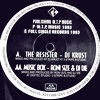
Roni Size & DJ Die — Music box 1993
From The resister / Music box single, Full Circle Records
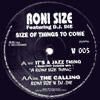
Roni Size — It’s a jazz thing 1994
From Size of things to come single, V Recordings
It took off from there. After the track It’s a jazz thing was released, the last year’s Music box seemed like an overture to the arrival of jazzstep. Double bass was introduced into the genre, reminding of the outlandish Jamaican dub music. Size proved that Music box was not just a one-time experiment and continued to gratify the ear with warm sounds produced by the iconic minimoog synths. The word ‘jazzstep’ has not appeared yet and Size’s attempts were called jazzy jungle—the word expression that best defined the drum pattern and the sound o the new phenomenon.
Soon Roni Size recruited a whole band of seven musicians: vocalists, drummer, bassists, and keyboardists. Together they formed an act Reprazent and began to release music that sounded like something between jazzstep and
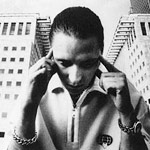
Adam F
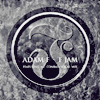
Adam F — F-Jam (Vocal mix) 1996
Perfomed by MC Conrad
From F-Jam single, F-Jams
Adam F was a little ahead of Roni Size when in 1996 he released a very interesting work named
After a major split of musical scene jazzy jungle was replaced by jazz&bass. This term was chosen as the name of the compilation that was released piece by piece for eight years by the New Identity label belonging to DJ SS. In 1995 Fabio established his Creative Source label that slowly but steadily continued to influence intelligent

Morf — Dallas 1996
From A jazzstep injection into drum’n’bass compilation, SOUR

Carlito — Heaven 1995
From Heaven / Carlito’s way single, Creative Source
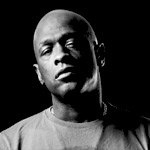
Fabio
It is assumed that Fabio was the first one to introduce the term jazzstep in 1996 and the SOUR label picked it up and released the compilation A jazzstep injection into
History of jazz extends back over a hundred years. A great number of people coming from different places each having its own distinctive culture, musical dialect and sound, influenced the genre and created other subgenres and new musical movements. Jazz is a versatile genre that can offer a lot more than an average listener expects. Jazzstep is almost as versatile as jazz itself.
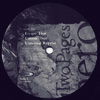
4hero — Escape that 1998
Vocal Face
From Two pages album, Talkin’ Loud
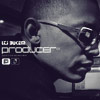
LTJ Bukem — Moodswings 1996
From Producer 01 (2000) album, Good Looking Records
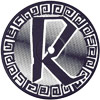
Sci-Clone — El son 1999
From Enforcers (Deadly chambers of sound) compilation, Reinforced Records

Jason Cambridge
1994 saw the release of Parallel Universe by 4hero duo, an album that combined the delicacy of artcore and the roughness of jungle. In 1998 they released double album Two pages that was nominated on Mercury Awards the same year. The record did not receive the well-deserved award, yet the listeners saw its true value. This was a rich sounding album infused with various features of different musical styles: funk, soul, jazz,
The act Blu Mar Ten was formed while artcore was gaining momentum. They were promptly noticed by the almighty LTJ Bukem, founder of Good Looking Records, who signed them to his label. This duo mixed very lush, multilayered and melodious
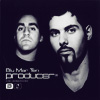
Blu Mar Ten — Adrift in a deep water 1997
From Producer 03 (2002) compilation, Good Looking Records
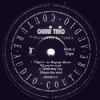
Omni Trio — Trippin‘ on broken beats (Carlito remix) 1996
Remixed by James Mitton-Wadeh
From The Haunted Science album, Moving Shadow
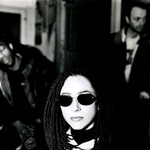
Jaz Klash
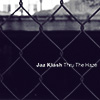
Jaz Klash — Intrigue (Down for whatever) 1997
Vocal The Angel
From Thru the haze album, Cup of Tea Records
In 1995 three musicians gathered in Bristol in order to record an album. They seemed like an epitome of jazzstep: a duo of local electronic musicians and a girl from Los Angeles who combined jazz, downtempo, reggae, dub, hip hop, soul—anything that came into her afro bunches covered head. Thru the Haze album was recorded during the winter of 1995—96 and released a year later on a local label Cup of Tea Records that focused on eclectic sound collages and the work of the Jaz Klash definitely fell into the category.
Meanwhile, in the cold city of Saint Petersburg of the newly independent Russia, two young musicians in their early twenties jumped into the British hype wave and in 1998 released the first jungle album in the country (a landmark record for Russian electronic music) named Vremya Pesok (Time is like a handful of sand). The beginning of the album sound calm and artcore-y, yet it gradually changes and turns into breathtaking jazzstep. Two Russians mixed syncopated rhythm patterns with fragments and samples taken from the old days of jazz when the newly emerged style from America sounded fierce and wild. At times the music sounds as if you were at a live concert and the music was played online: the DJs are here, well-educated musicians are here, the energy fills up the room. It feels like you are on a real jam session. This is almost Adam F, yet more free and easy. Both sides of the Jazz it up album feature the combination of

Eugeniy Arsentiev
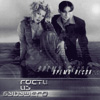
Guests from the Future — Jazz it up (Part 1) 1998
From Vremya pesok album, Nikitin

Guests from the Future — Jazz it up (Part 2) 1998
From Vremya pesok album, Nikitin
Actually, the presence of a comparable number of live jazz instruments on the record, whether they are sampled or not is what distinguishes jazzstep from artcore. Nice light drums, soft melody flowing from the left channel to the right one, horns—trumpet or saxophone, doupble bass serving as a taut foundation for a track. To cut a long story short, saxophone featured on an artcore track does not immediately turn this track into jazzstep. Jazzy feeling does that.
Music & stories
12″ pages on social networks and weekly materials that you can’t find on the website. Cool electronic music videos, tune of the week, histories behind albums and FridayFive tracks. Join!